Midterm Project Report
A. Thawing Giants: Exploring Melting Glaciers – Yuke Zhang (Alina) – Gottfried Haider
Here is the link of our midterm project:
https://drive.google.com/file/d/1uE8gcfHJO7bMSYWnl-JPYZzz6XQaGCZ3/view?usp=drive_link
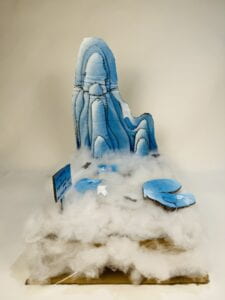
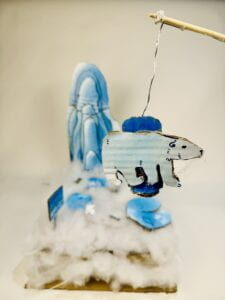
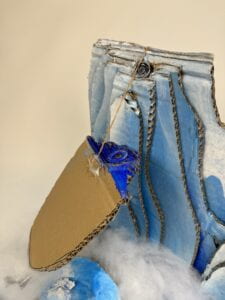
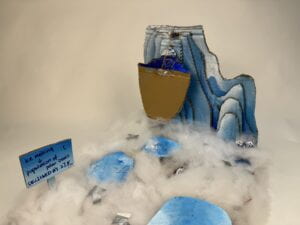
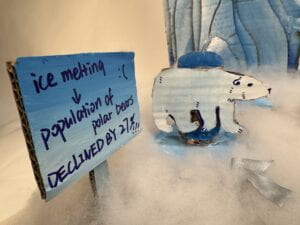
B. CONTEXT AND SIGNIFICANCE
During our group project in the recitation, we made a wing that can automatically open and close. We decided to continue making it as our midterm project at first, but soon we found it would be difficult for us to make the mechanism inside it. After that, I began research on the internet. First, I noticed that a project with some practical meanings might be important. Then, I came up with the idea of an interactive project that represented the feeling of the ocean. When I shared this idea with my partner, she suggested combining it with environmental issues. After further discussion, we decided to change to the topic of glacier melting which reflects global warming.
From my point of view, an interactive project should reflect the process of glacier melting. As a result, the traps of moving ice and the falling iceberg inspired us to create this interactive project. During the process, if the users can feel the process of ice melting by holding bears to walk on it, it forms the definition of interaction.
What is unique in our project is that we try to use an interactive project to reflect the issue of glacier melting as well as global warming, and we tried to make the interaction process like a story. When people take the polar bear and hold it to walk through all the traps and mechanisms in the box, they can explore the real scene of ice melting and realize the result of it, which is educational with the interactive actions created. In this case, the audience can experience the real situation as a result of global warming, and feel the tragedy behind it. So, the special value for the targeted audience is to warn them not to emit carbon dioxide or harm the environment.
C. CONCEPTION AND DESIGN
Our project aims to allow users to hold the bear and “walk” through different traps on the ice in order to depict the scene of glacier melting. To make this project like a story, we use a box to install all of the traps and created an iceberg, which makes it look like real ice. Then, the arrows point out the directions of each trap, which gives the user instructions on the movement of the bears throughout the whole story. Finally, our iceberg is created with several layers, in which users can engage more with this project. When the iceberg falls down, it shocks the audience.
In terms of the materials and elements that we used, we mainly used cardboard to create the whole project, including the iceberg, the polar bears, and floating ice. Apart from that, we used cotton to fill in the box and finally painted the whole object blue and white.
D. FABRICATION AND PRODUCTION
We spent more than 20 hours on fabrication and production, from building the circuit to making the cardboard. During the process, we had both failure and success. As the sensors were too sensitive, sometimes the servos moved quickly, but at the same time, when they moved fast, it might pull down some other wires, which made the circuit stop. Besides, the electronic magnet once stopped working. In that situation, I communicated with many professors. With their help, I finally solved the problem. Another difficulty we met was the cardboard. First, the cardboard of every mechanism wasn’t stable. To solve this issue, I stuck another small piece of cardboard on the existing one, which formed a little stage that made it stable. Second, at the end of the making mechanism, the iceberg couldn’t fall down because of the friction. With the professor’s advice, I put some tapes and made it more slippery, which made the mechanism more automatic and more interactive.
During the User Testing Session, we encountered some problems: our object didn’t work in the middle of the class (after that we found it was the wire connecting issue). In that case, I manually operated the mechanism in our project and tried to explain the process to the audience. What surprised me was that they gave us brilliant feedback as well as suggestions for improvement. For example, a testing user suggested we write down some data and numbers to show the fact of ice melting, which would be educational. Also, the professor and LAs suggested we add some arrows showing directions and a stick on the polar bear, making it more interactive. We adopted this advice, which was really helpful (with their suggestions, the project has become more interactive with these details).
As for the code and the circuit, we followed the slides to build the circuit and combined different codes together. Here are the pictures of the circuit and the code.
Here is the circuit of our project:
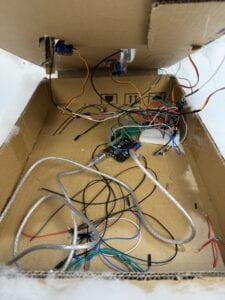
E. CONCLUSIONS
Our goal in this project is to let the audience feel the process of global warming as well as glacier melting in order to raise the audience’s awareness of protecting the environment. Satisfactoryly, our audience successfully interacted with our project by using bears to walk through all the traps. However, they said that they were a little confused about the locations of the sensors because it were hidden. Also, a professor told us it might lose the educational impact of the project because of the dream-like decorations. As a result, from the feedback from the audience, I realized that the users’ interaction with the project plays a significant role. Besides, we can not only focus on the beautiful exterior of the project instead of noticing the user experience. So, if I have more time, I will change the colors of the sensor to make it more obvious to the aaudience and change the color of the whole project from light blue to grey, which reflects the negative impact of glacier melting with dark scenes and becomes more educational. In addition, the traps and circuits still need to be improved, because sometimes they are not that sensitive.
Overall, we made an effort on our midterm project Thawing Giants: Exploring Melting Glaciers. Although it is not perfect, we will try hard to make the projects better in the future.
